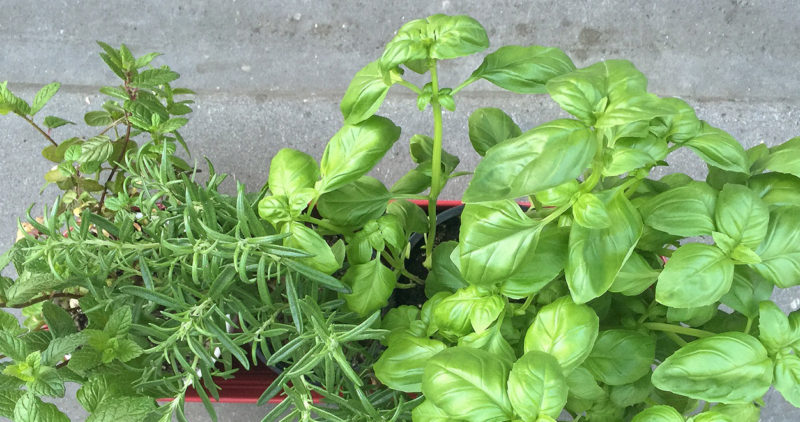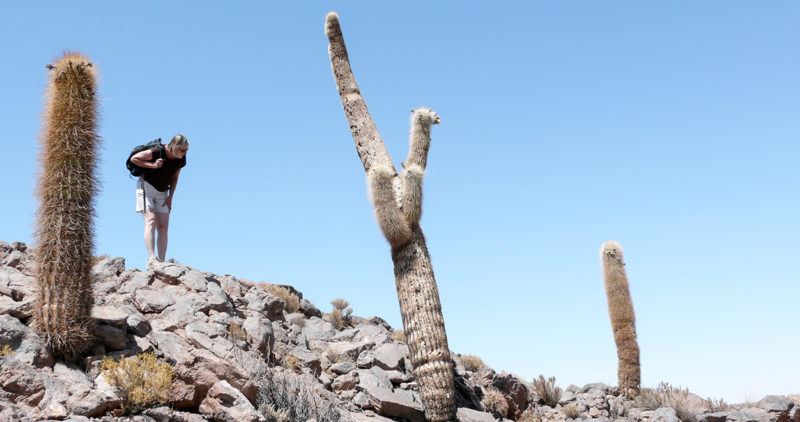
Knowing how to water a houseplant is one of the most important skills a plant parent needs to master. We usually think of dry soil as being detrimental to plants, but in fact, it’s more often overwatering that leads to plant failures. To prevent overwatering, we often stress the importance of holes in the bottom of pots because holes allow excess water to drain away from the plant’s roots. But what if your favorite container doesn’t have a drain hole? While maybe not the ideal situation, a lack of drain holes isn’t a deal breaker either – you’ll just need to take a few extra precautions. Here we’ll share tips for watering your favorite houseplants in your favorite containers – whether or not it has drain holes.

For Containers with Drain Holes
Finding the right balance between under- and over-watering can be tricky, but if your container has drain holes, properties of the potting mix itself will help you meet that goal. Unlike the soil we find outside, professional potting mix is made of a special mix of organic materials like peat moss, vermiculite, perlite, and pine bark. These materials create a light and fluffy substrate that supports optimal plant growth by retaining just the right amount of moisture around the roots and letting excess water drain away quickly. A good airy potting mix also allows the right amount of air to circulate around the roots, bringing needed oxygen – and preventing damaging cases of bacterial rot. Whether the mix is a classic potting mix used with many of our tropical houseplants or it’s a specialty mix designed specifically for plants like cacti or orchids, the enhanced drainage capabilities of a commercial potting mix work best when drain holes are there to let the excess water drain away.
So, in a container with drain holes, the best way to water most plants is to pour enough water into the pot to completely wet all the potting mix – from top to bottom – and let the excess water escape out the holes. How often should we water? For many houseplants – like dracaena, pothos, philodendrons, and rubber plants, to name a few – we recommend waiting to water again until the top surface of the potting mix dries down a quarter of an inch or so. How often that happens depends on several factors including the temperature, humidity level, how root-bound the plant is, and how much light the plant is receiving. For instance, houseplants in bright light often need water more often than plants in darker spaces. But that’s not all types of houseplants. Some plants – like cacti and sansevieria – prefer their potting mix to dry out almost completely before they see more water. And others – like ferns and prayer plants – want to stay pretty consistently moist. As you learn more and get to know your individual plants, you’ll figure out a watering routine that meets their needs. By not allowing too much water to stay near the roots, drain holes make figuring it out easier for you too.
For Containers Without
But, that’s not to say all is lost if your favorite container lacks a drain hole. Many of the most beautiful and decorative ceramic containers you’ll find don’t have holes. The glassware used for terrariums won’t have them either. Yet, plant parents successfully raise plants in these types of containers too.
The easiest way to use a container with no holes is to not actually plant in the container at all. Instead, treat it as a decorative sleeve around another, more utilitarian container that does have holes. All of the houseplants in our collection come in plastic “grow” pots with excellent drainage. Simply leave the plant in this pot and then drop it into the decorative container. When it’s time to water, lift the plant and its grow pot out, water thoroughly in the sink or tub, and let it drain completely. Then it’s ready to put back into the decorative container. This method is called “staging” or “double-potting” and takes full advantage of both the beauty of the outer pot and the drainage benefits of the grow pot. For plants that are very sensitive to overwatering – cacti, for example – this method is the best way to go. As for aesthetics, if the two pots are similar in size and fit together well, it can be hard to tell that you haven’t planted directly into the decorative pot. Or, if needed, you can disguise your two-pot system with a layer of green or sphagnum moss on top of the potting mix. If you use a decorative layer, be sure to push it aside from time to time to check soil moisture.
Although the double-potting method might be an ideal situation for the plant, it’s not always a practical one for the plant parent. Maybe the grow pot doesn’t fit well into the decorative one. Maybe the plant is so big that lifting and moving it to be watered just isn’t going to work. It’s possible then to plant your houseplant directly into a container with no holes too – you’ll just need to be more attentive to your plant’s signals that it needs or doesn’t need more water. Keep in mind that in this situation, any water you add to the potting mix is going to stay there until the plant uses it up. So, plants that work best potted directly into containers with no holes are those that don’t mind sitting in a little extra moisture for extended periods of time – for instance, maidenhair ferns and Venus fly traps. For houseplants that prefer their potting mix to dry a little before their next drink, you’ll need to be conservative as you water. Instead of drenching the potting mix – like you would if there were drain holes – you’ll need to carefully add just enough water to thoroughly moisten the soil around the roots, but not so much that you waterlog the potting mix and leave water sitting in the bottom of the container. In a glass container, this is easier to do because you can see the potting mix and you can tell when to stop adding water. Is it a bit more work to water plants in these containers than if you had drain holes to help? Yes, but being able to use that gorgeous ceramic pot that goes perfectly in your home? Totally worth it. As an example, our creative director, Dana Howerter, grows many of her plants – large and small – in glassware simply because she loves the way it looks in her home.
What to Watch For
Whether your container has holes or not, working out a watering routine that works for both you and your plant collection is a learning process. Plants have their own ways of communicating their needs, and if you pay close attention to their signals, they’ll help you figure things out. It’s especially important to watch for these signs if the container has no drain holes. For instance, if you know it’s been a little while since you last watered, and the plant starts to get a bit wilty – or in the case of a succulent, shriveled – it’s time to water again. If a foliage plant starts to wilt but you’ve watered recently, and the soil is still damp, it may be telling you it’s not getting enough oxygen to its roots because of overwatering. Overwatering can also cause the leaves on a foliage plant to turn yellow or develop black spots – a sign of a bacterial or fungal infection. In this case, move the plant to a brighter location, hold off on watering, and wait a few days to see if the plant recovers. If it doesn’t, you may need to unpot the plant, rinse the old potting mix away, and give it a fresh start with new potting mix. As always, if you have any questions about how to water the various plants in your collection – or if something concerning happens – just talk with one of our greenhouse team members. We’ll be happy to help.
Pots with drain holes may be the easiest way to go for you and most of your plants, but don’t let that scare you away from a container that doesn’t have them. No matter which type of planter you choose, over time, you’ll learn to recognize the signals your plants sends out about its water needs and know what to do to keep it happy and healthy for a long time.


